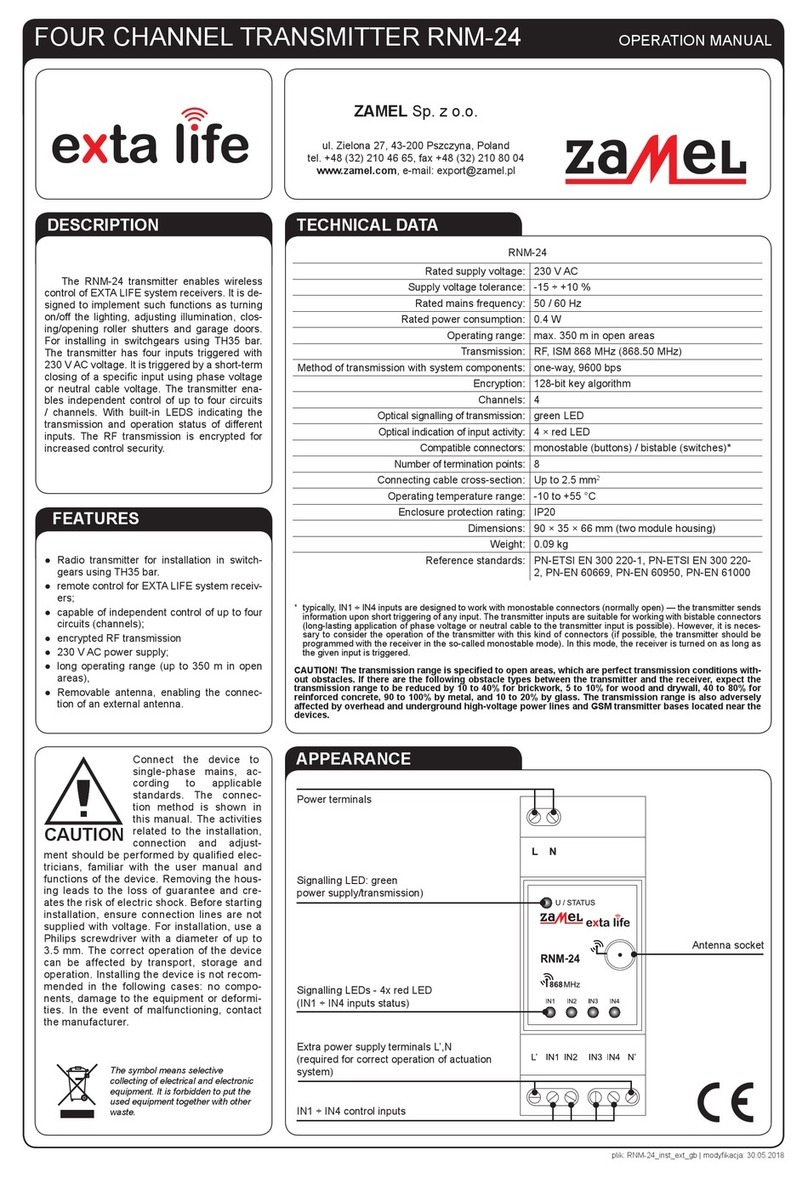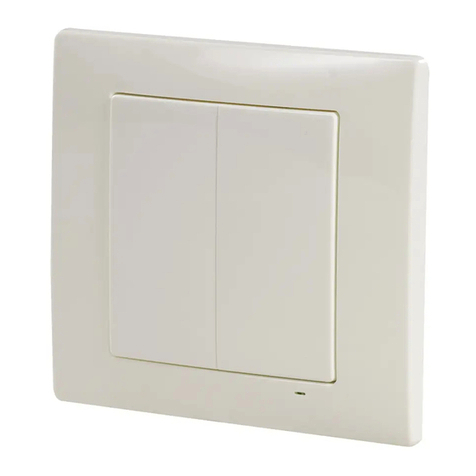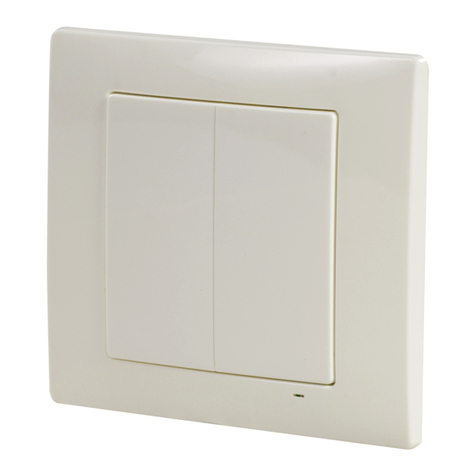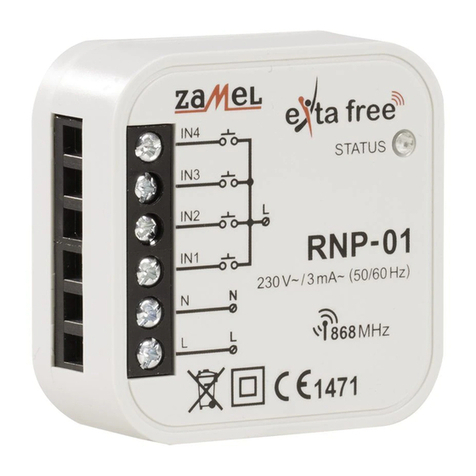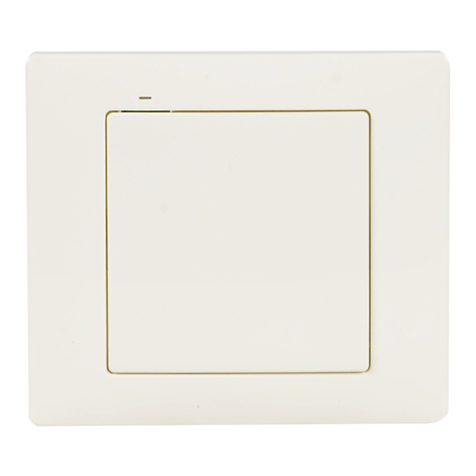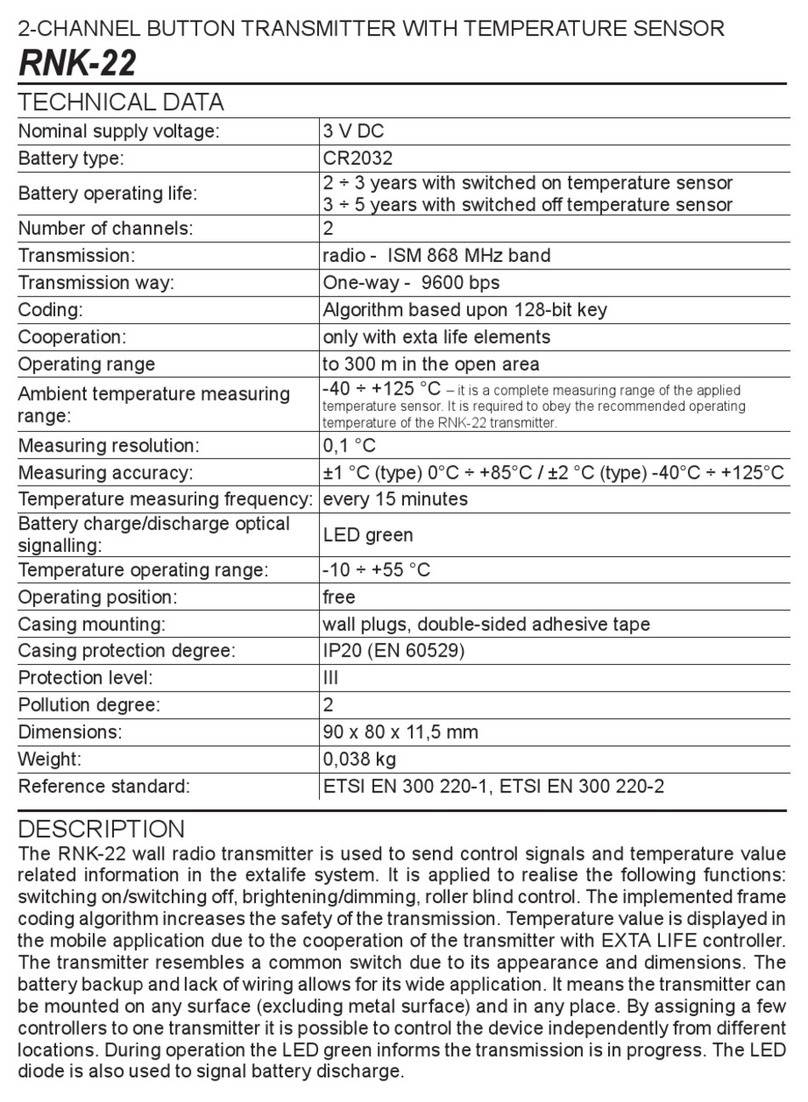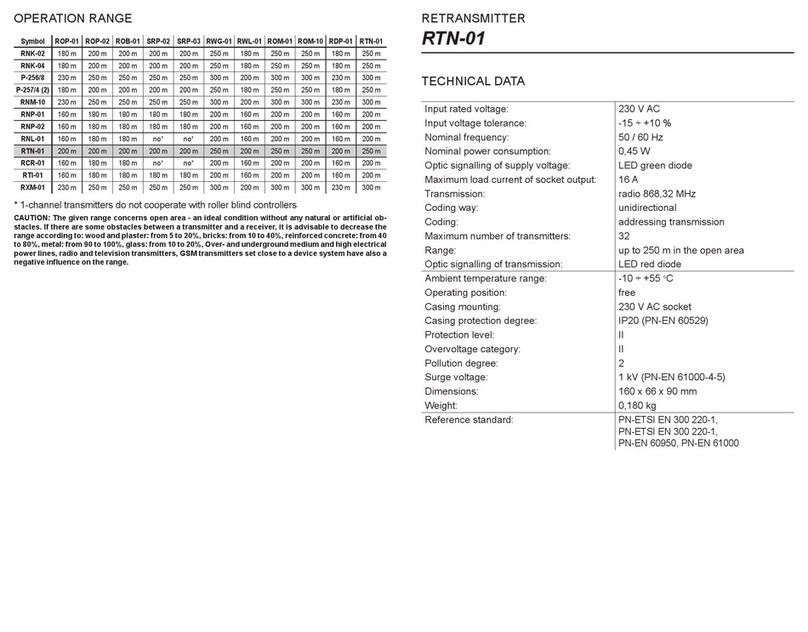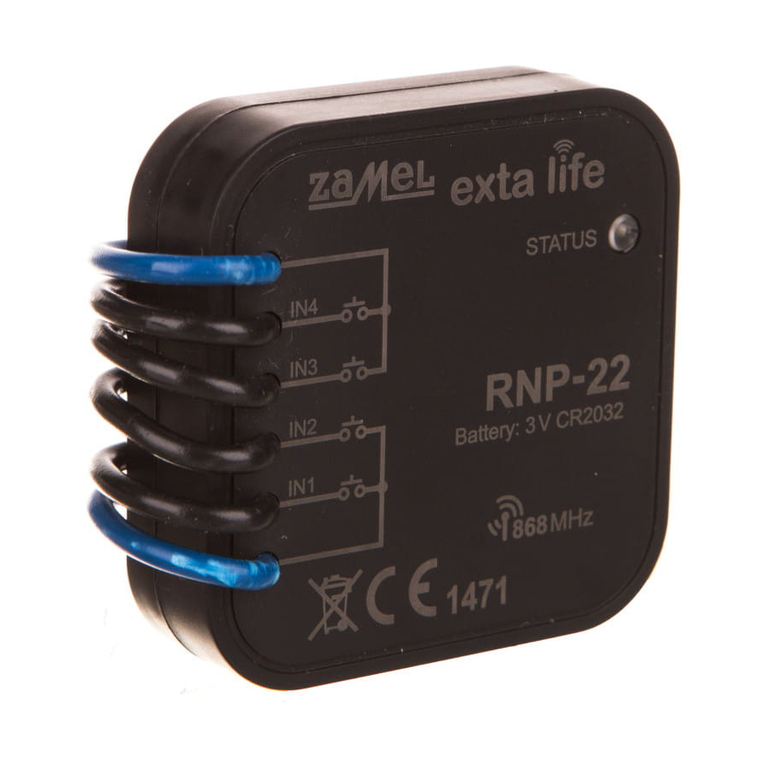
III. DESCRIPTION / APPEARANCE OF THE BUTTON
The button is compatible with BULIK II PRO DRS-995. It is battery powe-
red (2 x AAA LR03). It does not require any bell installation. The 868 MHz
frequency is used to transmit signal (communicate with door chimes). The
button has a very wide range in the open area of up to 1,400 m**. A ma-
ximum of 69 buttons can be programmed for one door chime. Selected
melody can be assigned to the buttons. One button can be assigned to
many door chimes at the same time. Apart from the modern design and
lack of moving elements (touch button), PDH-250 is also hermetic. It is
resistant to weather conditions and can be mounted outside of IP56 rooms.
IV. INSTALLATION
PDH-250 is hermetic. Its housing has been assigned with IP56 protection
class. The button can operate under varying weather conditions and can be
mounted outside.
The button is adapted to work on any surface, with the only exception
being metal surfaces which can reduce its operating range (in particular,
avoid installing the button in metal covers). A large operating range of up
to 1400 m** means that this transmitter will work out in difcult conditions,
such as a large distance between the button and the door chime, a large
number of walls or other obstacles that can signicantly reduce the range
of radio signal.
It is installed with double-sided tape or mounting adhesives. It can also be
screwed using two screws. When using the screws, particular attention
should be paid to maintain airtightness (so that moisture does not get inside
the button through the mounting holes).
The button can be mounted vertically or horizontally. The recommended
way of mounting the button is shows on the next page.
V. WARNING THAT THE BATTERY IS LOW
LED in the PDH-250 button shows that it is necessary to replace the bat-
tery when it lights several times during transmission (pressing the button).
9
